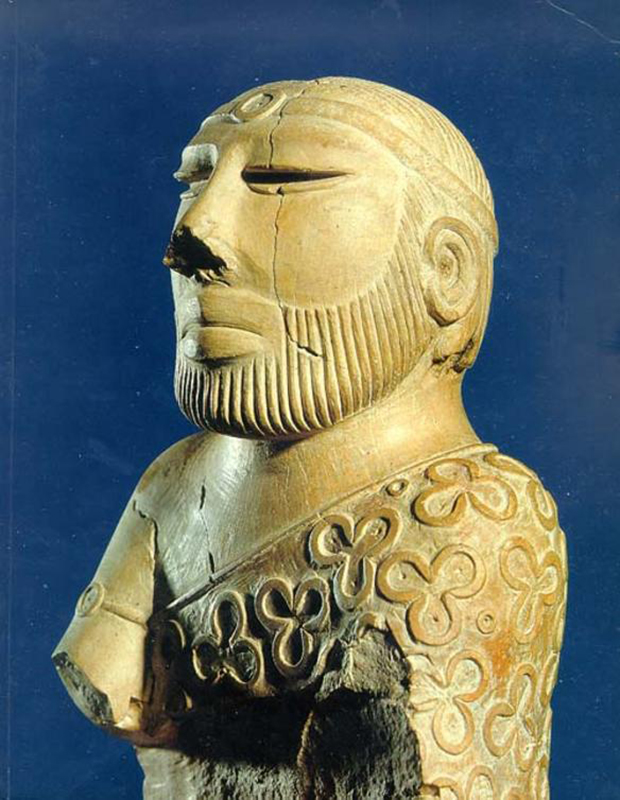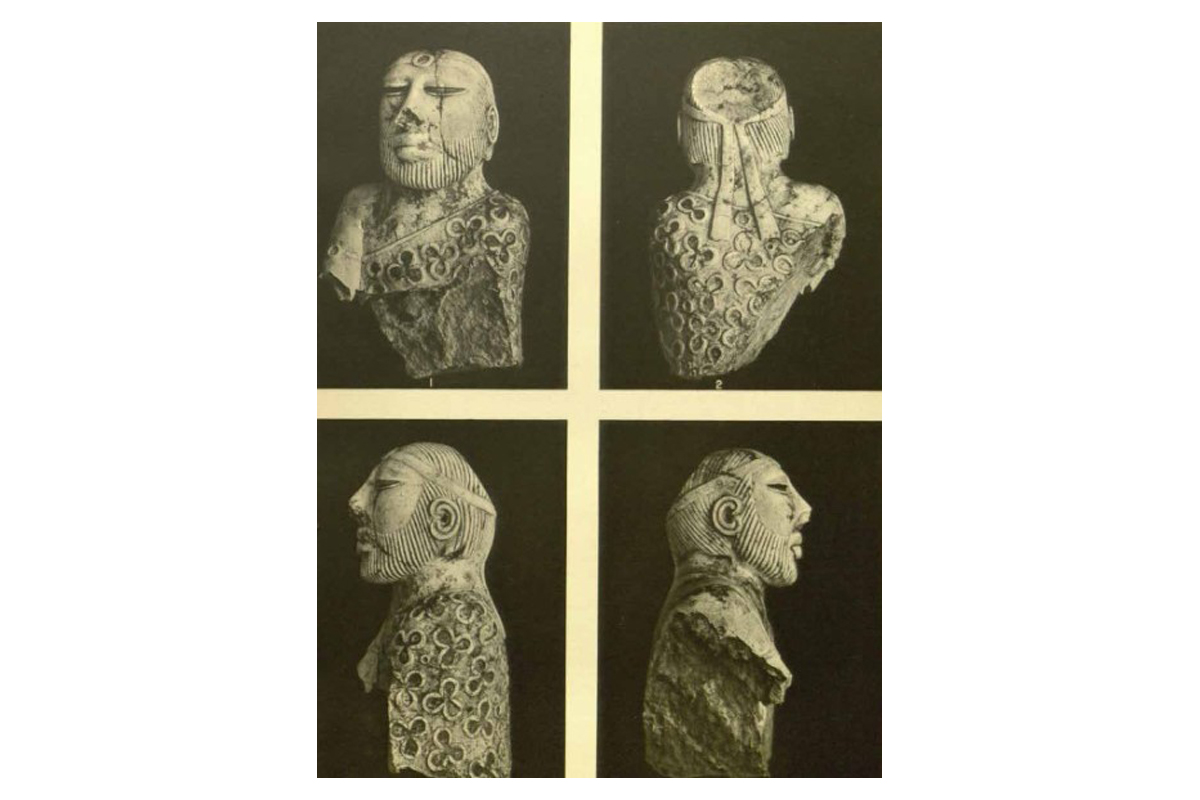A white, low-fired steatite bust depicting a bearded man, the Priest-King, as it is commonly known, was excavated at the Indus Valley Civilisation site of Mohenjo-daro in the present-day Sindh province of Pakistan. The statuette was found by archaeologist Kashinath Narayan Dikshit during a 1925–26 excavation by the Archaeological Survey of India.
Dating back to the Mature Harappan Period, approximately 2100–1750 BCE, the now-broken torso is about 18 centimetres tall and 11 centimetres wide. The face of the sculpture bears incised work lines made by a carving instrument to represent a beard. Some of the lines extend into the area of the cheeks and were never polished out, suggesting that the sculpture remained unfinished.
Depicted with half-closed eyes, curved ears and thick lips, the figure wears a toga-like garment draped over the left shoulder and tucked under the now-broken right arm. A band is wrapped around this arm. The garment is interspersed with raised trefoil motifs and circles carved out in shallow relief. The figure’s hair is parted in the centre and held together by a diadem set in the centre with a circular ornament. Holes pierced under the ears suggest that a head-dress was attached to the sculpture. This may have been horned, as seen in other recovered Indus Valley Civilisation figures. While the original appearance of the sculpture is difficult to ascertain, a fragment of shell inlay was recovered from an eye, and traces of red pigment remain in the garment’s trefoil pattern.
Many scholars have attempted to establish the figure’s identity and status. Some have studied its physiognomic type, while others have compared its trefoiled cloak to similar motifs in Egyptian, Mesopotamian, and Minoan art — as well as to texts describing later South Asian mythological figures such as Varuna. The pattern has also been compared to the cloud motif seen in ajrakh prints, which were being produced for export around the time when the statuette was made. The sculpture’s half-open eyes have led to speculation that the figure is engaged in yogic meditation. The extended arm may have been meant to rest on the knee, with the body arranged in a seated posture. The diadem might be linked to the South Asian royal turban of later millennia. Archaeologist John Marshall considered these factors when he dubbed the statuette a ‘king-priest’, which Mortimer Wheeler later inverted to ‘priest-king’. It has not been possible to confirm whether the sculpture is a portrait of a deity, a real person, or a representation of an abstract concept.








